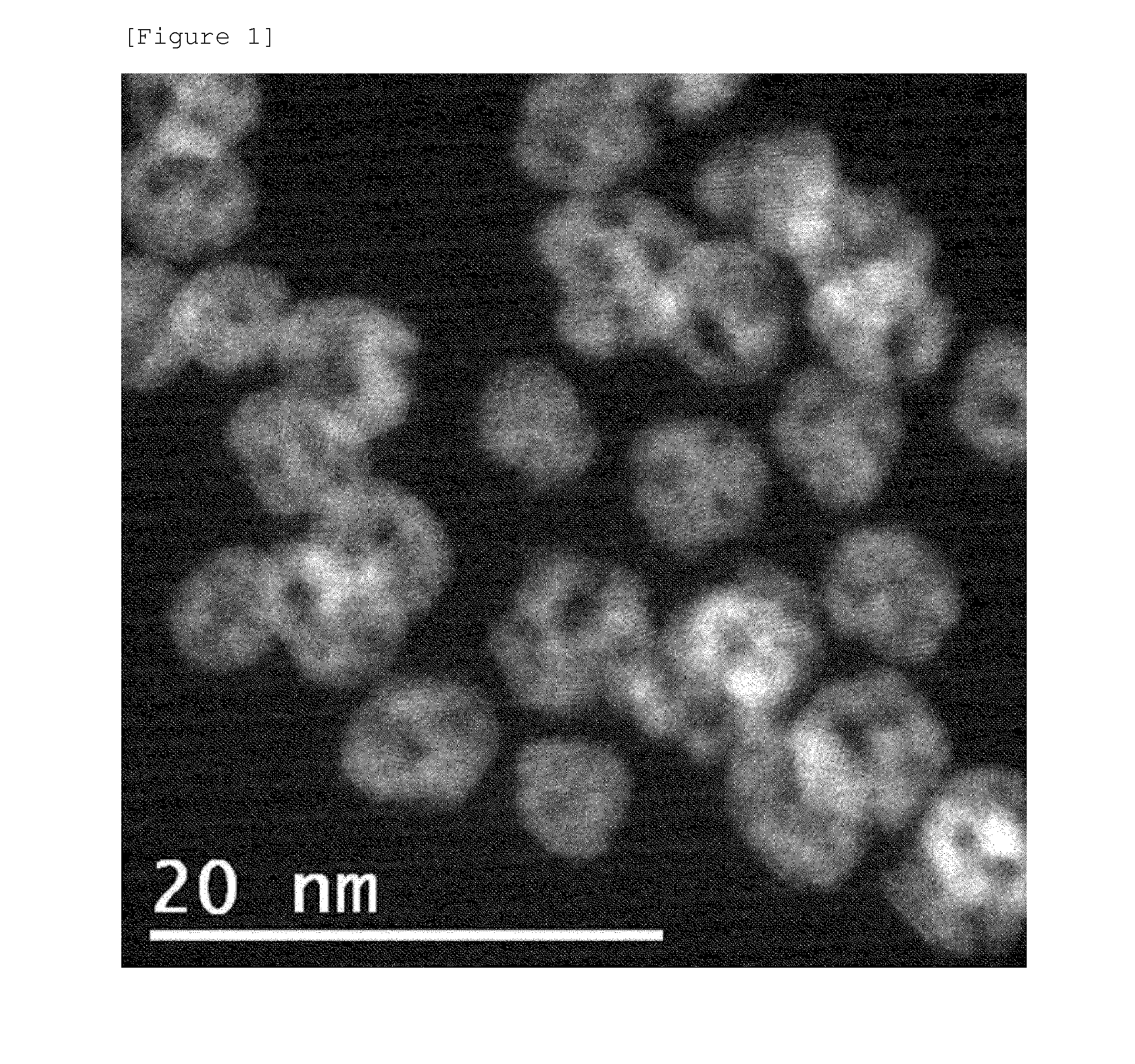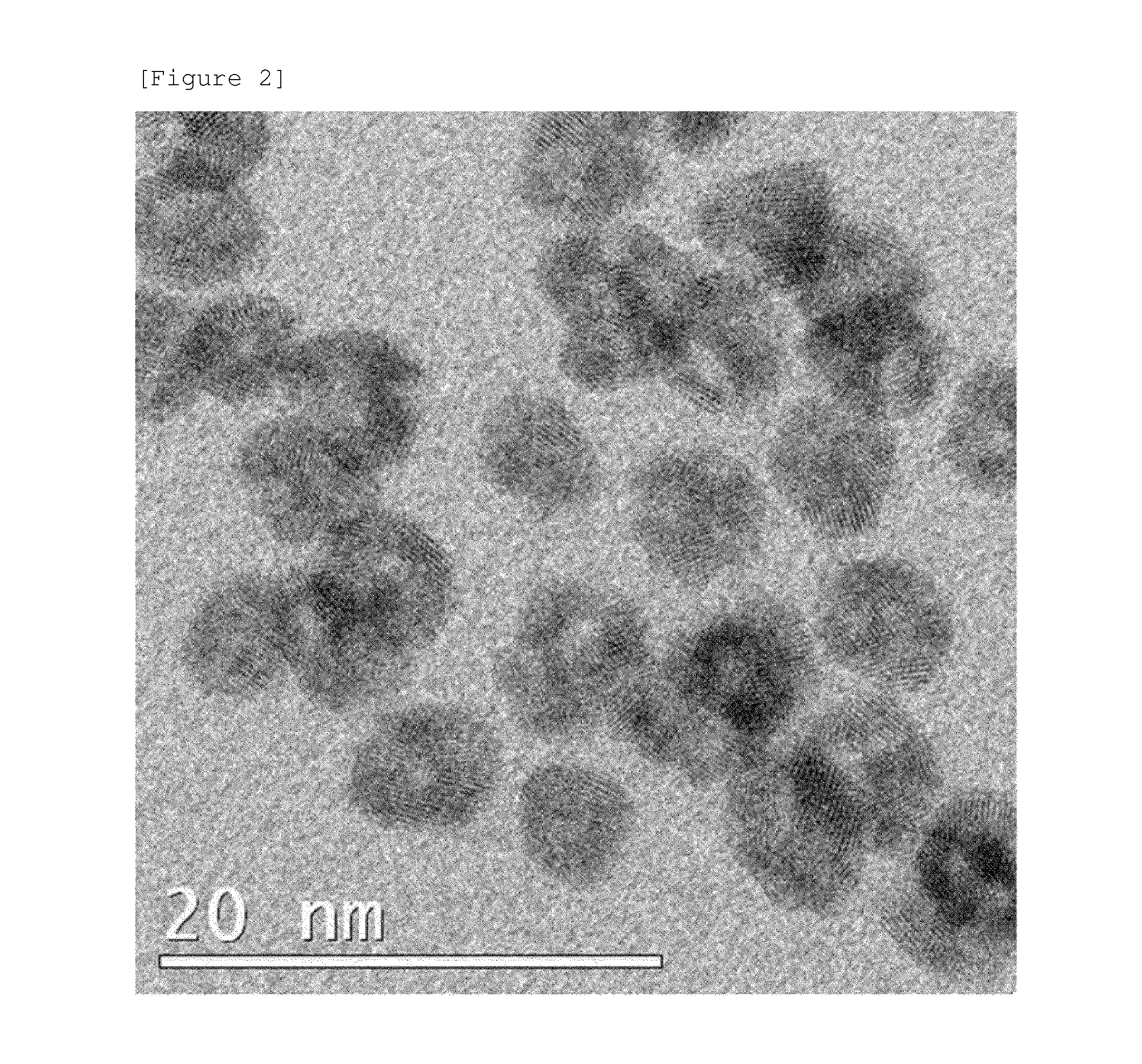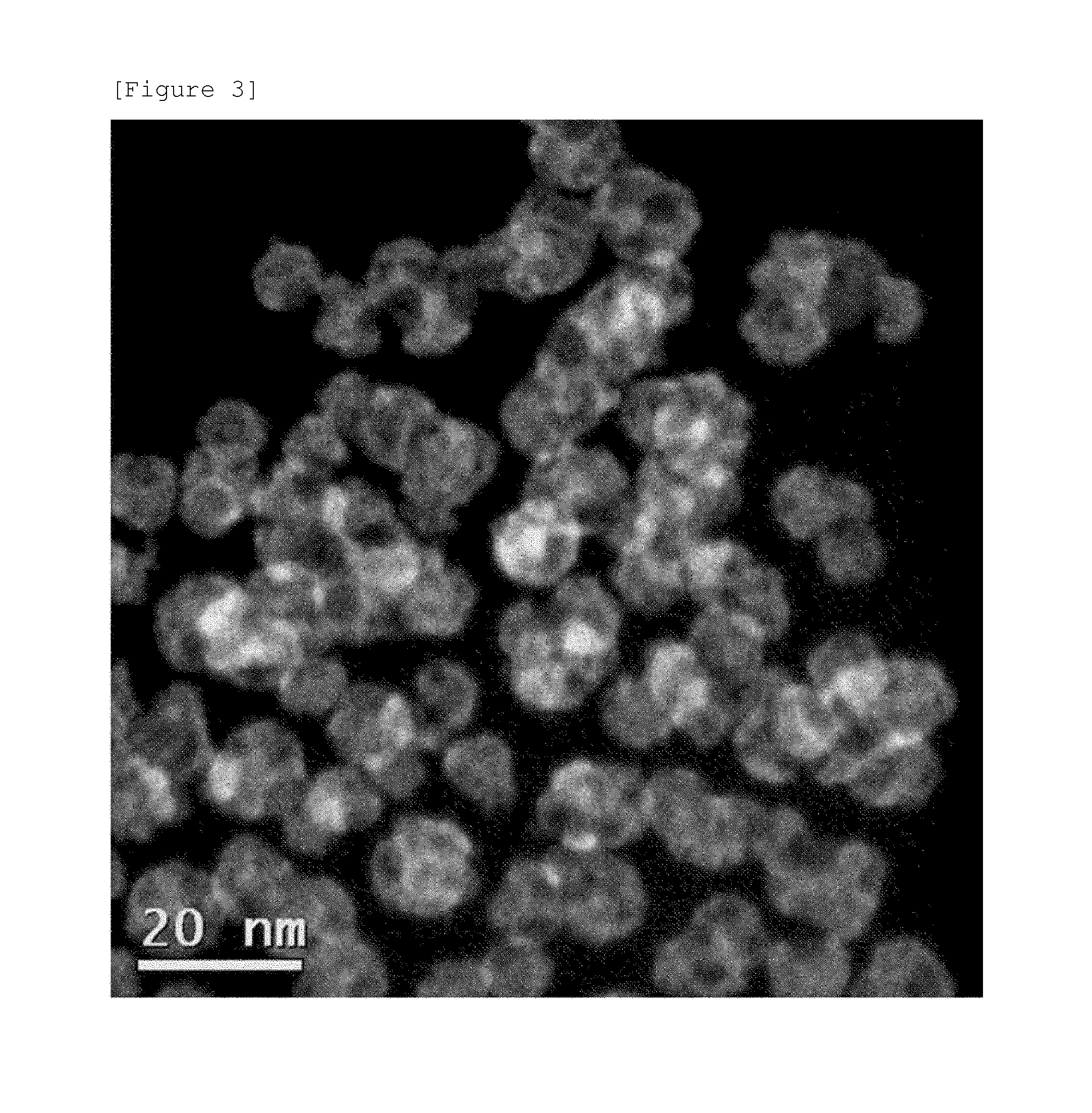Metal nanoparticles
- Summary
- Abstract
- Description
- Claims
- Application Information
AI Technical Summary
Benefits of technology
Problems solved by technology
Method used
Image
Examples
example 1
[0155]Ni(NO3)2 as a first metal salt, K2PtCl4 as a second metal salt, sodium dodecylsulfate (SDS) as a first surfactant, sodium 1-heptanesulfonate (SHS) as a second surfactant, and trisodium citrate as a stabilizer were added to distilled water to form a solution, and the solution was stirred for 30 minutes. In this case, the molar ratio of K2PtCl4 to Ni(NO3)2 was 1:3, and the ALS was 2 times the critical micelle concentration (CMC) to water, and SHS was 1 / 10 mole of SDS.
[0156]Subsequently, NaBH4 as a reducing agent and polyvinyl pyrrolidone (PVP) as a non-ionic surfactant were added to the solution and the mixture was left to react for 30 minutes.
[0157]Thereafter, the mixture was centrifuged at 10,000 rpm for 10 minutes to discard the supernatant in the upper layer, and then the remaining precipitate was re-dispersed in distilled water, and then the centrifugation process was repeated to prepare the metal nanoparticles of the specification of the present application. The process of...
example 2
[0160]Ni(NO3)2 as a first metal salt, K2PtCl4 as a second metal salt, ammonium lauryl sulfate (ALS) as a first surfactant, SPAN 60 as a second surfactant, and trisodium citrate as a stabilizer were added to distilled water to form a solution, and the solution was stirred for 30 minutes. In this case, the molar ratio of K2PtCl4 to Ni(NO3)2 was 1:3, and the ALS was 2 times the critical micelle concentration (CMC) to water, and SPAN 60 was 1 / 10 mole of ALS.
[0161]Subsequently, NaBH4 as a reducing agent and polyvinyl pyrrolidone (PVP) as a non-ionic surfactant were added to the solution and the mixture was left to react for 30 minutes.
[0162]Thereafter, the mixture was centrifuged at 10,000 rpm for 10 minutes to discard the supernatant in the upper layer, and then the remaining precipitate was re-dispersed in distilled water, and then the centrifugation process was repeated to prepare the metal nanoparticles of the specification of the present application. The process of preparing the met...
example 3
[0164]Ni(NO3)2 as a first metal salt, K2PtCl4 as a second metal salt, sodium dodecylsulfate (SDS) as a first surfactant, N-dodecyl-N,N-dimethyl-3-ammonio-1-propane sulfonate (DDAPS) as a second surfactant, and trisodium citrate as a stabilizer were added to distilled water to form a solution, and the solution was stirred for 30 minutes. In this case, the molar ratio of K2PtCl4 to Ni(NO3)2 was 1:3, and the ALS was 2 times the critical micelle concentration (CMC) to water, and DDAPS was 1 / 10 mole of SDS.
[0165]Subsequently, NaBH4 as a reducing agent and polyvinyl pyrrolidone (PVP) as a non-ionic surfactant were added to the solution and the mixture was left to react for 30 minutes.
[0166]Thereafter, the mixture was centrifuged at 10,000 rpm for 10 minutes to discard the supernatant in the upper layer, and then the remaining precipitate was re-dispersed in distilled water, and then the centrifugation process was repeated to prepare the metal nanoparticles of the specification of the pres...
PUM
| Property | Measurement | Unit |
|---|---|---|
| Fraction | aaaaa | aaaaa |
| Fraction | aaaaa | aaaaa |
| Fraction | aaaaa | aaaaa |
Abstract
Description
Claims
Application Information
 Login to View More
Login to View More - R&D Engineer
- R&D Manager
- IP Professional
- Industry Leading Data Capabilities
- Powerful AI technology
- Patent DNA Extraction
Browse by: Latest US Patents, China's latest patents, Technical Efficacy Thesaurus, Application Domain, Technology Topic, Popular Technical Reports.
© 2024 PatSnap. All rights reserved.Legal|Privacy policy|Modern Slavery Act Transparency Statement|Sitemap|About US| Contact US: help@patsnap.com










